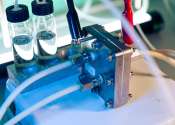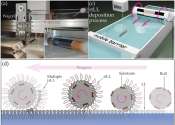A new system for producing green hydrogen cheaply and efficiently
What does it take to produce green hydrogen more efficiently and cheaply? Apparently, small ruthenium particles and a solar-powered system for water electrolysis. This is the solution proposed by a joint team involving the ...
Dec 13, 2023
5
279









